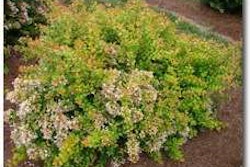 European_chafers
European_chafersDavid Cappaert, Michigan State University, Bugwood.org
It doesn’t take much digging to discover that grubs are a problem pest for turf managers throughout the United States. Given the expansive nature of grubs and the damage they can do, much time has been devoted to developing ways to control them, leading to some very effective products. If you aren’t getting rid of grubs, it’s time to troubleshoot your technique.
There are a variety of factors that can influence efficacy of products used for grub control, but there are three variables that are the most-likely culprits. If your results for control aren’t what you expected, odds are it’s because the product isn’t watered in effectively, the active ingredient isn’t appropriate or the timing is off.
Keep in mind, though, your standards of control might need an adjustment as well. In general, mortality in excess of 60 percent is considered to be adequate to drop the white grub population below the injury level and thus accomplish the goal of the application, according to the University of Illinois Extension. But it’s possible to boost that percentage by optimizing application timing and technique.
Damage control
Initial signs your client may have grubs or that a treatment has failed are often revealed in spring as turf begins to green up. If you see bare patches, you’ll want to sample for grubs. Healthy turf can withstand a low population without evidence of damage up top, especially during a rainy fall or spring. But 10 to 12 grubs per square foot generally are enough to cause visible damage to turf.
Just add water
Getting grub-control products to the root zone where the larvae are feeding is a critical component to treating them successfully. In fact, it could be the most common missing link between a hit and miss, says David Smitley, professor of entomology and landscape industries extension specialist at Michigan State University.
Research tests during the past 25 years have clearly shown watering immediately after the application is critical to obtaining good results, according to Smitley, who has worked on a journal article that reports the results of a meta-analysis of 25 years of his grub research trials.
“The single most important factor tied to failure to control grubs is not irrigating immediately after application. This is true for both sprayable and granular formulations,” Smitley says.
Even insecticides that don’t specify watering in on their labels will degrade from the ultraviolet light in sunlight if not watered into the soil within a few days of application by rainfall or irrigation, according to the University of Illinois Extension Service.
Staying active
Both curative and preventive products are available for grubs, but your best bet for getting consistent control is to use a preventive product on lawns that have a history of grub populations. Getting grubs in the larval stage makes them much easier to control.
“If you had confirmed grub damage (meaning that you found lots of grubs) the previous fall or spring then you may want to use a preventive insecticide for one or two years to build a more dense turf that will be tolerant of grubs,” Smitley says. “If you have treated for several years and you do not see evidence of grubs in your lawn or in the neighbor’s lawn, it may be time to stop treating.”
For prevention, Smitley recommends looking for products containing imidacloprid, thiamethoxam or chlorantraniloprole. These products, he says, work well for newly hatched grubs.
While larger (older) grubs are harder to control, there are products formulated to kill grubs in all stages. Carbaryl and trichlorfon are both effective at getting grubs when you’re too late for a preventive treatment.
“Do not use products containing only lambda-cyhalothrin, gamma-cyhalothrin, bifenthrin, deltamethrin, cyfluthrin or permethrin for grub control,” Smitley says. “Products containing only these ingredients will not work for grub control because the active ingredient binds with organic material and will not move down to where the grubs are feeding.”
About time
Timing is critical when it comes to preventive grub control. Apply a product too early, and it will degrade or move through the soil and be gone before grubs hatch. If you’re too late, grubs will be larger, rendering your product ineffective. Always consult the product label for instructions on when to apply but know weather can influence the timing, too.
You want to get the product watered in a few weeks before grubs hatch, unless you’re using a product with the active ingredient chlorantraniliprole, which, according to Smitley, is less water-soluble and will stay in the soil longer.
“It is best to apply a product containing chlorantraniliprole as early in the spring as possible … for it to be the most effective when grubs hatch in July and August (in northern areas),” Smitley says.
Joe Weiss, owner of Green Rx Lawn and Pest Solutions in St. Louis, offers grub control as part of his standard lawn care program and has built a reputation for getting grubs.
“We do preventive control of grubs to hit them when they are younger and easier to control,” says Weiss, who attributes much of his success to application timing. “We put down product in early summer and that’s usually a rainy time around here, which helps.”
For prevention, Weiss and his crews use imidicloprid (AmTide) liquid treatments. Unless he picks up a client late in the season, he doesn’t have to bother much with curative treatments. When he does, he opts for trichlorfon (Dylox).
“When you offer a full program, it’s better to pay a little more for something you know is going to work than go with something cheaper and have to hope it works. I’ve never had a problem with a product not providing excellent and expected results for a client,” Weiss says. “I think we just have our timing down and know that it’s going to work.”









